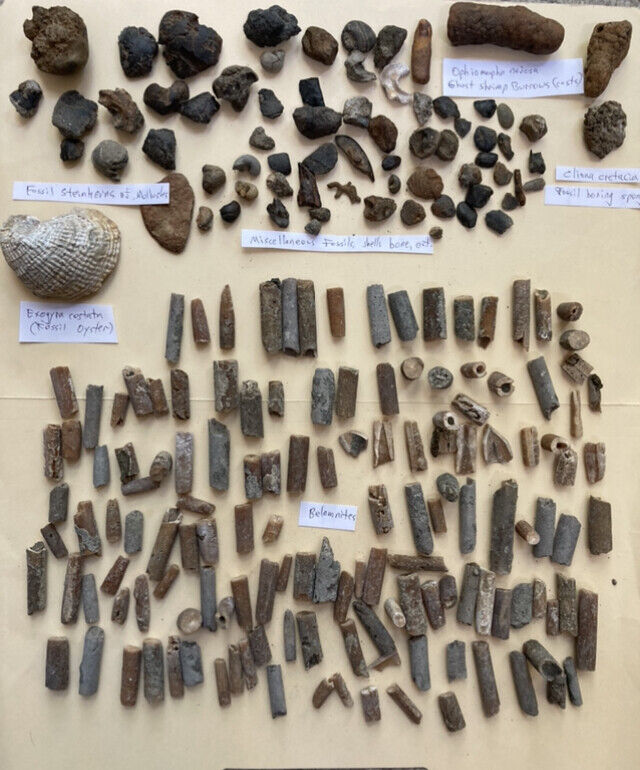-40%
DINOSAUR AGE NEW JERSEY FOSSILS 70 Million Year Old Squid Sponge Shells Shrimp
$ 7.91
- Description
- Size Guide
Description
DINOSAUR AGE NEW JERSEY FOSSILS 70 Million Year Old Squid Sponge Shells ShrimpBelemnite Fossils. Exogyra fossil extinct oyster, Mollusk Steinkerns
NJ Upper Cretaceous @ 70 Million years old DINOSAUR age CEPHALOPODS
Belemnite Fossils
NEW JERSEY Navesink Formation
MAASTRICHTIAN Age Upper Cretaceous @ 70 million years old
Mesozoic Era, Age of the Dinosaurs
You get all (over 100) Specimens shown in picture. For hobby and Paleontological Educational studies
Note article on these specialized fossils. These are directly from the Upper Cretaceous deposits and some still have marl deposits attached.
fyi: The New Jersey municipalities of Marlboro and Marlton were named after this specialized formation.
They will be shipped priority in box as shown. Baby Hadrosaur not included.
Belemnitida
(or the
belemnite
) is an
extinct
order
of
squid
-like
cephalopods
that existed from the
Late Triassic
to
Late Cretaceous
. Unlike squid, belemnites had an internal skeleton that made up the cone. The parts are, from the arms-most to the tip: the tongue-shaped pro-ostracum, the conical
phragmocone
, and the pointy guard. The
calcitic
guard is the most common belemnite remain. Belemnites, in life, are thought to have had 10 hooked arms and a pair of fins on the guard. The
chitinous
hooks were usually no bigger than 5 mm (0.20 in), though a belemnite could have had between 100 and 800 hooks in total, using them to stab and hold onto prey.
Belemnites were an important food source for many Mesozoic marine creatures, both the adults and the planktonic juveniles, and likely played an important role in restructuring marine ecosystems after the
Triassic–Jurassic extinction event
. They may have laid between 100 and 1,000 eggs. Some species may have been adapted to speed and swam in the turbulent
open ocean
, whereas others resided in the calmer
littoral zone
(nearshore) and fed off the seafloor. The largest belemnite known,
Megateuthis elliptica
, had guards of 60 to 70 cm (24 to 28 in).
Belemnites were
coleoids
, a group that includes squid and
octopuses
, and are often grouped into the superorder
Belemnoidea
, though the higher classification of cephalopods is volatile and there is no clear consensus how belemnites are related to modern coleoids. Guards can give information on the climate, habitat, and the carbon cycle of the ancient waters they inhabited. Guards have been found since antiquity and have become part of folklore




















